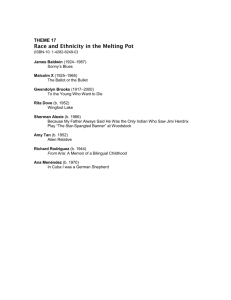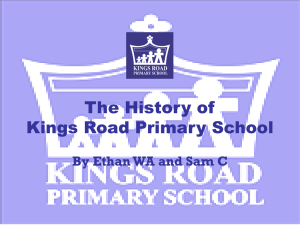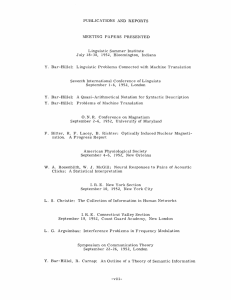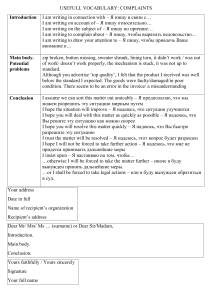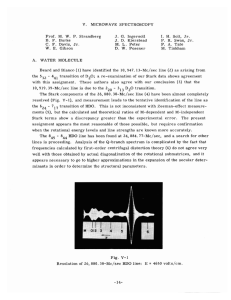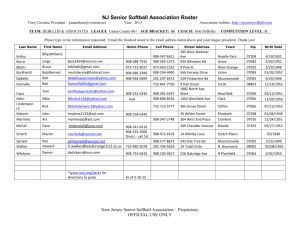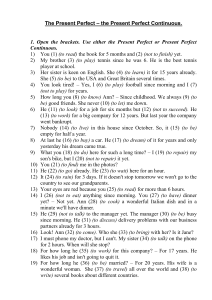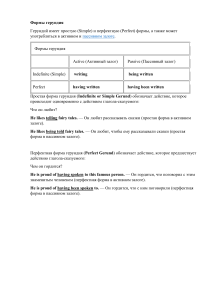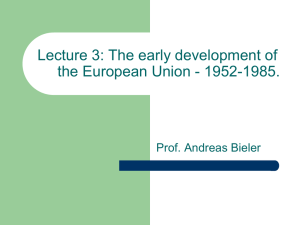DownloadDocument DOC255 kB
advertisement
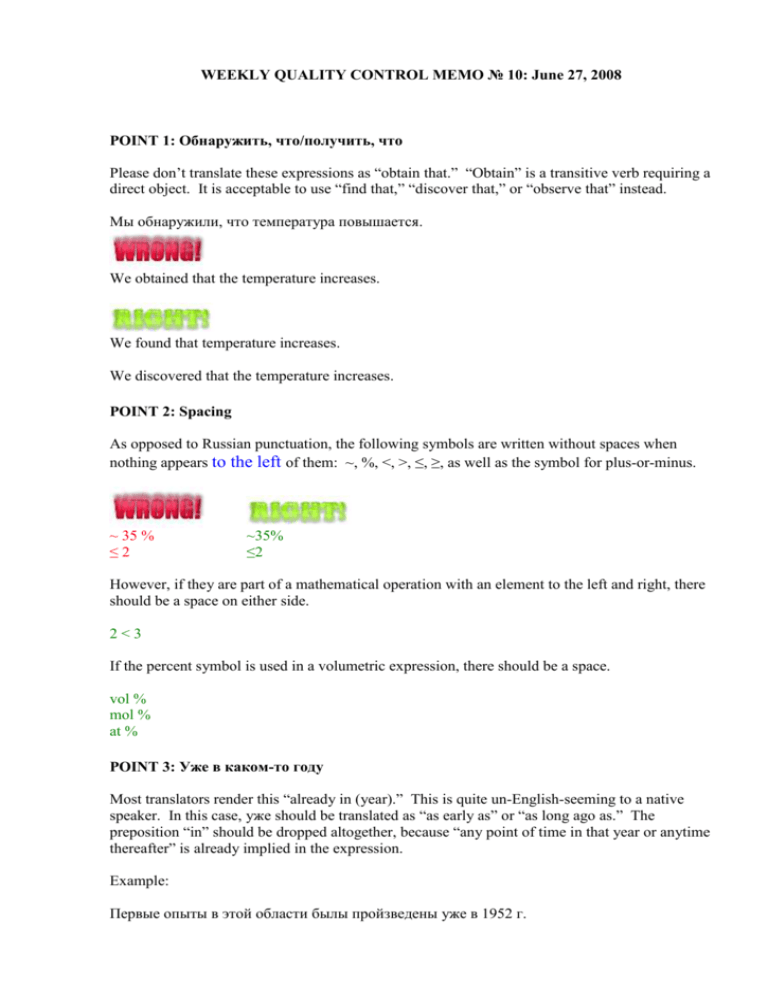
WEEKLY QUALITY CONTROL MEMO № 10: June 27, 2008 POINT 1: Обнаружить, что/получить, что Please don’t translate these expressions as “obtain that.” “Obtain” is a transitive verb requiring a direct object. It is acceptable to use “find that,” “discover that,” or “observe that” instead. Мы обнаружили, что температура повышается. We obtained that the temperature increases. We found that temperature increases. We discovered that the temperature increases. POINT 2: Spacing As opposed to Russian punctuation, the following symbols are written without spaces when nothing appears to the left of them: ~, %, <, >, ≤, ≥, as well as the symbol for plus-or-minus. ~ 35 % ≤2 ~35% ≤2 However, if they are part of a mathematical operation with an element to the left and right, there should be a space on either side. 2<3 If the percent symbol is used in a volumetric expression, there should be a space. vol % mol % at % POINT 3: Уже в каком-то году Most translators render this “already in (year).” This is quite un-English-seeming to a native speaker. In this case, уже should be translated as “as early as” or “as long ago as.” The preposition “in” should be dropped altogether, because “any point of time in that year or anytime thereafter” is already implied in the expression. Example: Первые опыты в этой области былы пройзведены уже в 1952 г. The first experiments in this field were performed already in 1952. The first experiments in this field were performed as early as in 1952. The first experiments in this field were performed as early as 1952. The first experiments in this field were performed as long ago as 1952. POINT 4: диаметра, длины, размера.... Please don’t translate these (and LEs, don’t leave them if you encounter them) as an exact English copy of their genitive Russian forms followed by a measurement. No one writes like that in English. 1. диаметра 15 мм of diameter 15 mm 2. длины 25 м of length 25 m Use the following instead: 1. 15 mm in diameter; with a diameter of 15 mm 2. 25 m long; 25 m in length; with a length of 25 m POINT 5: Color combinations Here’s a point that to this day still gives me trouble. How do colors obey hyphenation rules when they are used as compound modifiers? Our HSG’s take on this is as follows: If the two colors are of equal weight, they should be hyphenated (not separated with an en dash!): blue-green algae red-green color blindness yellow-green solution However, if the color combination is such that one color describes or modifies the other, no hyphen is used: bluish green tint reddish brown hue dark orange color coal black cat
